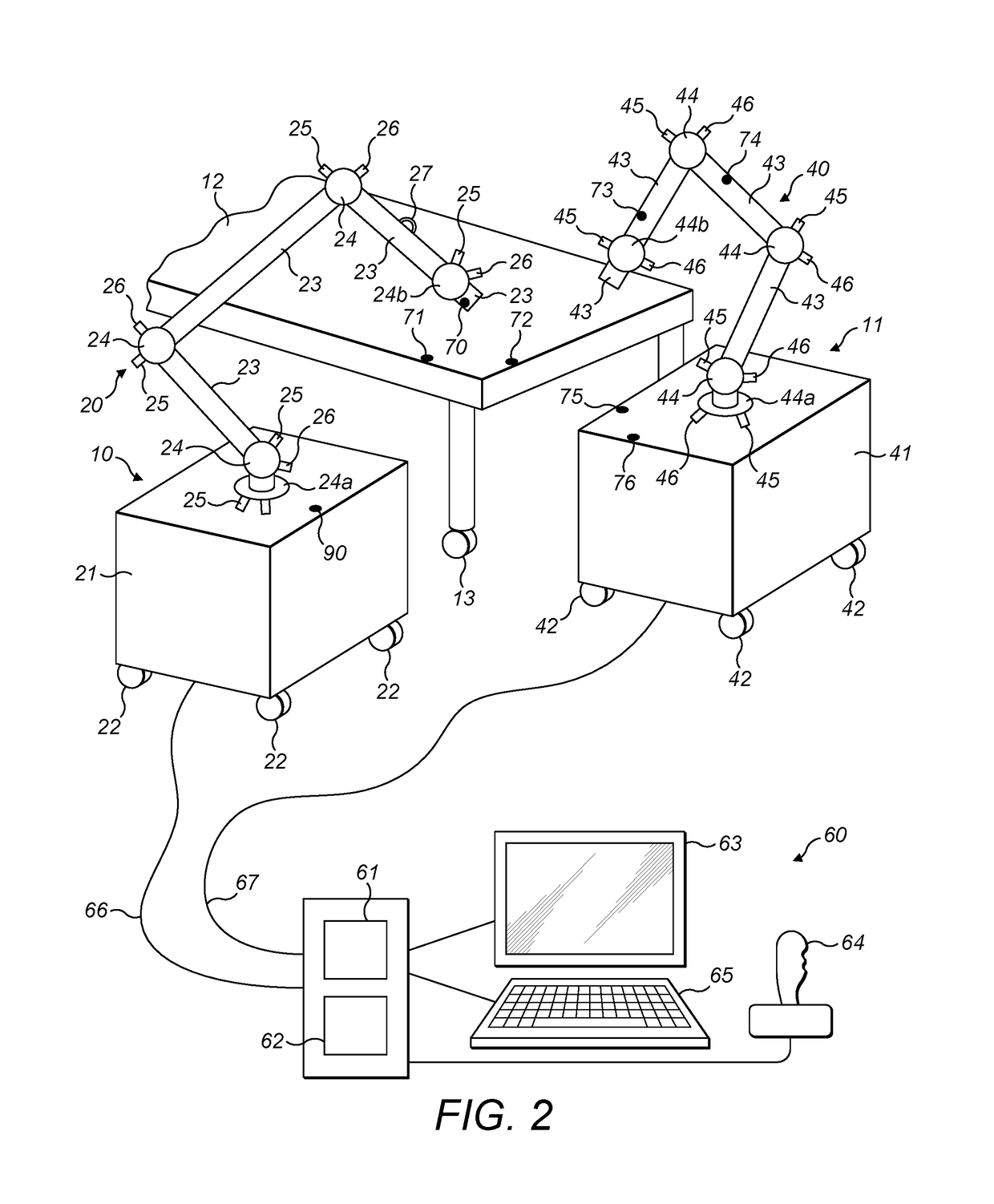Characterising robot environments
a robot environment and characterisation technology, applied in the field of spatial characterisation, can solve the problems of limiting the range of surgical procedures that can be carried out by such systems, affecting the operation efficiency of the operation, and the possible spatial relationship between the arms, so as to achieve the effect of modifying the arm configuration
- Summary
- Abstract
- Description
- Claims
- Application Information
AI Technical Summary
Benefits of technology
Problems solved by technology
Method used
Image
Examples
Embodiment Construction
[0034]A surgical robot may have an arm that is flexible by virtue of a series of joints arranged along the arm which allow the arm to be reconfigured. The robot may be able to sense the configuration of its joints. When it is necessary to calibrate the robot's knowledge of its position relative to other furniture in the operating environment, for example another robot or an operating table, a first datum point on the arm can be moved into contact with a second datum point on the other furniture. By sensing the configuration of the arm when it is in contact with the second datum point the spatial relationship between the arm and the other furniture can be estimated. That relationship can then be used as data for controlling the robot during a subsequent procedure, for example to inhibit collision between the robot arm and the furniture.
[0035]FIG. 2 shows an example of a surgical environment. Robots shown generally at 10 and 11 are placed near a table 12 in preparation for performing ...
PUM
 Login to View More
Login to View More Abstract
Description
Claims
Application Information
 Login to View More
Login to View More - R&D
- Intellectual Property
- Life Sciences
- Materials
- Tech Scout
- Unparalleled Data Quality
- Higher Quality Content
- 60% Fewer Hallucinations
Browse by: Latest US Patents, China's latest patents, Technical Efficacy Thesaurus, Application Domain, Technology Topic, Popular Technical Reports.
© 2025 PatSnap. All rights reserved.Legal|Privacy policy|Modern Slavery Act Transparency Statement|Sitemap|About US| Contact US: help@patsnap.com



